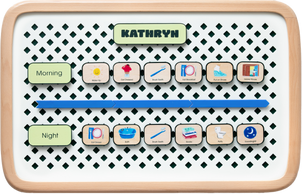Meet the Team: Allie Klein

anWhat do learning and play have in common? If you ask early childhood educator Allison Klein, who oversees content development here at Charmspring, her answer would be: “Everything!”
As an educator and mom, Allie has made integrating play into families’ routines her life’s mission. Before joining Charmspring, Allie got her Ms.ED in early childhood and childhood education and founded Rose & Rex, an online destination for playful parenting with developmental play guides, classes and ethically made toys.
In this interview, she explains the importance of play and how Charmspring fits into her parenting worldview. Let’s go!
Okay, so what exactly is play-based learning?
Play-based learning is using play experiences to support holistic learning and development. By making play the foundation for learning, kids develop academic, physical, cognitive, and social development skills. Play is how children learn and it leads to hands-on and immersive learning experiences.
How does play make a difference in kids’ development?
In my classroom, parents would often ask questions like, “How do I support early math skills at home?” My answer was always, “Play!” Block building actually helps with counting, patterning, and even skills like handwriting because it refines those fine-motor muscles. Play and learning are not separate things; they’re actually interconnected.
How did your time in the classroom inspire Rose & Rex?
I would come up with “play lists” for parents to take home to figure out which toys to buy. This sparked the idea for an educational toy company where each toy comes with content that explains why the toy is important for development and how to use it to maximize learning and creativity.
Speaking of toys… how do parents choose the “right” ones?
I tell parents to ask themselves these two questions:
- Can this toy be used in more than five ways?
- Is the toy doing the work or is the child doing the work?
For the first question, if the answer is “yes,” that means the toy is open-ended instead of directive. A good example of this is a block set because there are an infinite number of ways children can personalize and use blocks.
For the second question, if the kid is doing more of the work then it encourages more imagination and developmental skills. An example of a toy doing more of the work would be a modern fire engine truck with an electronic button that makes sound versus a wooden fire truck where the kid makes the siren sound.
If a toy can be used more than five ways and the child is doing more work, then it’s a great choice to encourage play-based learning.
What are common difficulties you hear from parents and families?
There’s so much pressure on them to find the “right” expert and make the “right” decisions! I always remind them there isn’t one way to parent. I tell them: “Trust your gut, your instincts. Go back to that belief that you know what’s best for your child.”
Why are you excited about Charmspring?
It’s such an amazing tool for parents and families. The Springboard encourages social-emotional health by decreasing anxiety and supports child development by teaching skills like literacy, time awareness, and sequencing.
It even strengthens family connection and communication because families can build routines together as a team. When I found out about it, I wanted it for my own son. I also love that the Springboard isn’t a rigid system. Instead it’s a framework that gives families necessary flexibility since every day is different with young children.
Did you love learning about play-based learning from Allie? Meet Steph Korey Goodwin and Jennie Monness, the rest of the team behind Charmspring!
